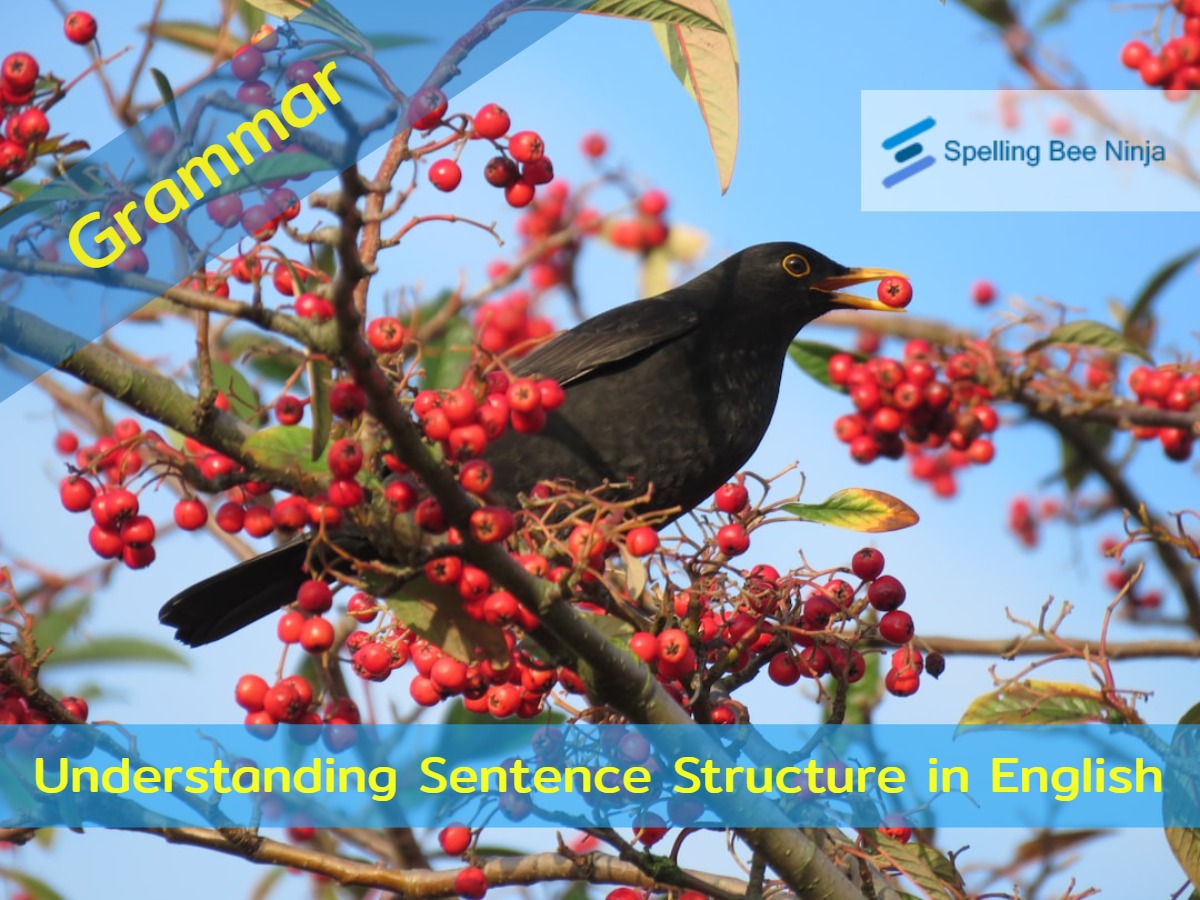Effective communication in writing depends largely on sentence structure. Understanding different types of sentences helps writers convey ideas with clarity and variation. The four main types of sentence structures are simple, compound, complex, and compound-complex sentences. Each serves a unique function and enhances writing when used appropriately. This article explores these sentence structures in detail, providing definitions, examples, and insights into their usage.
Simple Sentences
A simple sentence consists of a single independent clause. It has a subject and a predicate and expresses a complete thought. Simple sentences are straightforward and can be used to emphasize key ideas.
Examples:
- She enjoys reading books.
- The cat sat on the windowsill.
- We went to the park.
Simple sentences can also include compound subjects or predicates but remain structurally simple.
Examples:
- Sarah and Tom went to the library. (Compound subject)
- She danced and sang at the event. (Compound predicate)
Usage in Writing:
Simple sentences are useful for clarity and directness. They help maintain readability and are particularly effective in instructional writing, advertising, and statements requiring impact.
Compound Sentences
A compound sentence consists of two or more independent clauses joined by a coordinating conjunction (FANBOYS: for, and, nor, but, or, yet, so) or a semicolon.
Examples:
- I wanted to go for a walk, but it started to rain.
- She loves to paint, and he enjoys photography.
- The sun was setting; the sky turned orange.
Usage in Writing:
Compound sentences add variety and depth to writing by connecting related ideas. They prevent choppy prose and are useful for demonstrating relationships between thoughts.
Complex Sentences
A complex sentence consists of one independent clause and at least one dependent (subordinate) clause. The dependent clause cannot stand alone and often begins with a subordinating conjunction (because, although, since, while, etc.) or a relative pronoun (who, which, that).
Examples:
- Because it was raining, we stayed indoors.
- She finished her work before the deadline arrived.
- The student, who had studied diligently, passed the exam.
Usage in Writing:
Complex sentences allow for more detailed explanations and provide a hierarchy of information. They help writers express cause-and-effect relationships, conditions, and elaborations.
Compound-Complex Sentences
A compound-complex sentence combines elements of both compound and complex sentences. It includes at least two independent clauses and one or more dependent clauses.
Examples:
- Although he was tired, he completed the project, and he submitted it on time.
- She enjoys cooking because it relaxes her, but she dislikes cleaning up afterward.
- The book, which was highly recommended, turned out to be interesting, and I finished it in one night.
Usage in Writing:
Compound-complex sentences offer rich detail and nuance. They are ideal for sophisticated writing, such as academic essays, literature, and professional reports, where complex ideas need to be conveyed.
Comparing Sentence Types
Understanding the distinctions between sentence types helps in crafting well-balanced writing. Here’s a quick comparison:
| Sentence Type | Structure | Example |
|---|---|---|
| Simple | 1 Independent Clause | “She writes daily.” |
| Compound | 2+ Independent Clauses | “She writes daily, and she reads at night.” |
| Complex | 1 Independent + 1+ Dependent Clauses | “Because she loves stories, she writes daily.” |
| Compound-Complex | 2+ Independent + 1+ Dependent Clauses | “Because she loves stories, she writes daily, and she reads at night.” |
Free Resources for Sentence Structure Analysis
Using online tools can help writers analyze and improve sentence structure. Below is a list of free resources available:
| Resource | Description | Link |
|---|---|---|
| Grammarly | Checks grammar, punctuation, and sentence structure. | grammarly.com |
| Hemingway Editor | Highlights complex sentences and readability issues. | hemingwayapp.com |
| ProWritingAid | Provides in-depth sentence analysis and style suggestions. | prowritingaid.com |
| Sentence Checker | Identifies sentence fragments and structural errors. | sentencechecker.com |
| Linguix | AI-powered sentence correction and writing improvement tool. | linguix.com |
Sample Essay and Sentence Structure Analysis
Sample Essay:
Education plays a crucial role in shaping an individual’s future. Schools provide structured learning, but self-education is equally important. Many successful people credit their achievements to lifelong learning. While formal education lays the foundation, personal curiosity drives knowledge expansion. Reading books, attending online courses, and engaging in discussions help broaden perspectives. Although some argue that traditional education is sufficient, self-learning cultivates independence and critical thinking. Therefore, a balance between formal education and self-directed learning leads to the best outcomes.
Sentence Structure Analysis:
| Sentence | Sentence Type |
|---|---|
| “Education plays a crucial role in shaping an individual’s future.” | Simple |
| “Schools provide structured learning, but self-education is equally important.” | Compound |
| “Many successful people credit their achievements to lifelong learning.” | Simple |
| “While formal education lays the foundation, personal curiosity drives knowledge expansion.” | Complex |
| “Reading books, attending online courses, and engaging in discussions help broaden perspectives.” | Simple |
| “Although some argue that traditional education is sufficient, self-learning cultivates independence and critical thinking.” | Complex |
| “Therefore, a balance between formal education and self-directed learning leads to the best outcomes.” | Simple |
This analysis demonstrates how different sentence structures enhance clarity and variation in writing. By combining sentence types effectively, writers can create more engaging and well-structured content.
Why Sentence Structure Matters
Using a variety of sentence structures enhances writing by improving readability, engagement, and coherence. Overusing simple sentences may make writing sound repetitive, while excessive complex structures can create confusion. A well-balanced mix maintains a natural flow and keeps the reader engaged.
Final Thoughts
Mastering sentence structure is an essential skill for effective communication. By incorporating simple, compound, complex, and compound-complex sentences appropriately, writers can express ideas more clearly and persuasively. Whether writing essays, articles, or creative pieces, understanding these structures ensures strong and compelling prose.
- ✈️ How to Use Articles in English
- 🐝 Mastering Adjectives: A Key to Enhancing Your Writing Skills
- 🎮 Pronoun Puzzle: A Fun Way to Practice Personal and Possessive Forms
- 🎮 Adjective Adventure: Descriptive Word Search!
- ✈️ How to use prepositions in English
- ✈️ English Adverbs – 5 Quick and Easy ways to learn.
- The definitive pronouns list
- 🐝 Understanding conjunction words and where to use them
- ✈️ Modal Verbs in English: A Comprehensive Guide
- 🐝 Prepositions list – The definitive guide
- ✈️ Active and Passive Voice
- ✈️ What vs Which: differences and examples
- 🐝 Complete transition words list
- ✈️ How to Use Punctuation in English
- ✈️ Exploring the Difference Between “Will” and “Shall” in English
- ✈️ The Difference Between Could, Should, and Ought in English
- ✈️ Common Idiomatic Expressions in English
- ✈️ 40 English Prefixes and their meanings
- ✈️ 30 Most common English suffixes and their meaning.
- 🐝 Linking Words In English And How To Learn Them Effectively
- ✈️ Comparative and Superlative Adjectives
- ✈️ The Six Noun Types (Common, Proper, Countable, Uncountable, Collective, Abstract)
- ✈️ Understanding English Clauses: A Complete Guide
- ✈️ Understanding Sentence Structure in English
- ✈️ Gerunds and Infinitives: Understanding Verb Complements in English
- ✈️ Common Pronunciation Mistakes and How to Fix Them
- ✈️ Question Formation in English
- ✈️ Common Sentence Errors: Fragments, Run-ons, and Misplaced Modifiers
- ✈️ Say What?! A Fun Guide to Direct and Indirect Speech
- ✈️ Commonly Confused Words
- 🐝 ELA vocabulary: Essential English Language Arts Terms Every Student Should Know
- ✈️ Formal vs. Informal Language
- ✈️ Mastering Phrases in English Grammar
- ✈️ Conditionals (Zero, First, Second, Third, Mixed Conditionals)
- ✈️ Emphasis and Inversion in Sentences
- ✈️ Understanding and Using the Imperative Form


